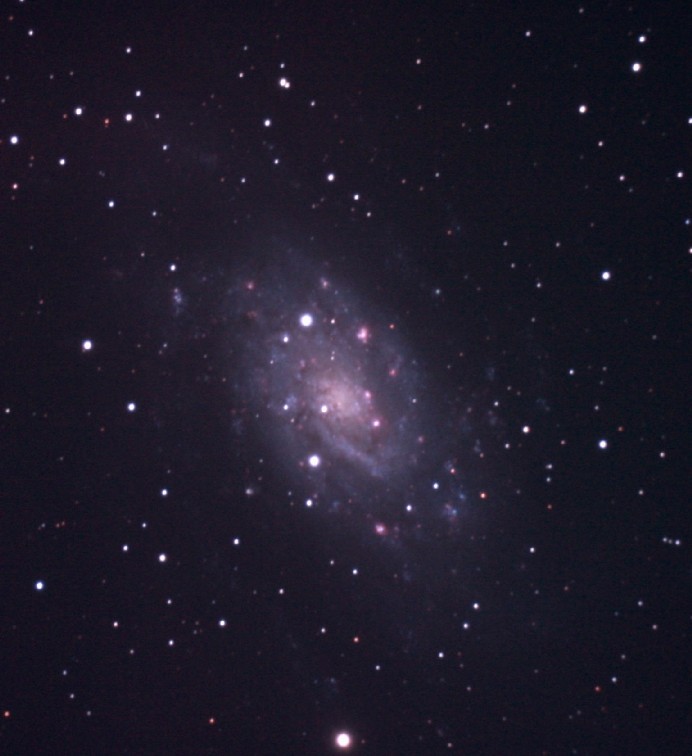
|
|
| Caldwell object #7, C7, (NGC 2403) |
|
A large and bright galaxy, about half way between the Gemini twins Castor and Pollex, and the north star. It is at its height during January and February, and is bright enough and big enough to be detected with binoculars. To see detail you'll need an eight inch scope, and preferably a 10" or larger. C7 is about 2/3rds the size of our Milky Way, a little bigger than M33 in our local group of galaxies. It has a mostly face on orientation toward us, and with it's nebulous spiral arms with pink glowing knots of hydrogen it is photographically reminiscent of M33 too. Although M33 is much closer, C7 is still relatively close at 10 million light years away. In fact it is the second largest galaxy in the next nearest galactic neighborhood to our local group. The other two major members in the neighborhood of C7, and about as easily visible, are M81, Bode's nebulae & M82, the cigar galaxy, just 13 degrees to the north and west. C7 is much more active than our Milky Way, having had a couple supernova go off in just the last 50 years, the last in 2004. In our galaxy there's maybe one every other century or so. The pinkish areas in the galaxy aren't stars, but are huge clouds of hydrogen that are glowing hot from the radiation given off by the huge new stars formed within them, that are thousands of times larger and brighter than our sun. This galaxy and particularly it's starburst galaxy neighbor M82, are as active as they are because they and about 25 other dwarf and medium galaxies are all within a huge molecular cloud, relatively close to one another and are tidally interacting and disturbing each other. |
|
10"
F6.3 Schmidt Cassegrain Telescope, Modified Canon 40D camera at Prime Focus |